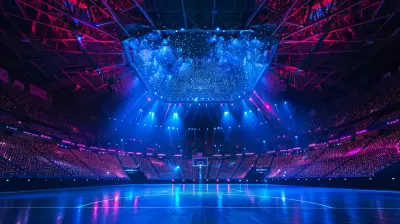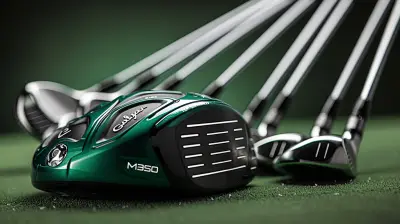The Impact of Technology on Tennis: From Racquets to Instant Replay
16 August 2025
Let’s take a stroll down memory lane for a second. Imagine stepping onto a dusty tennis court in the 1920s. Your shoes are stiff, the racquet is wooden and feels more like a cricket bat, and the ball? It’s nowhere near as responsive as today’s fuzzy yellow missile. Fast forward to now—players blast serves over 140 mph, racquets are light as feathers but tough as tanks, and every line call can be double-checked with Hawk-Eye technology.
Yep, tennis has undergone a serious technological makeover. But how did we get here? And more importantly—what does all this innovation actually mean for the sport and the players we love to watch?
Let's dive deep into how tech has reshaped tennis, from racquet strings to real-time instant replay.
The Evolution of Tennis Racquets: From Wood to Wonder-Materials
Remember those old-school wooden racquets? They had charm, sure—but tech has come a long way since then. Modern tennis racquets are basically aerodynamic engineering marvels.The End of the Wooden Era
For decades, players used heavy wooden racquets with small sweet spots—meaning you had to hit the ball just right or risk a mishit. They demanded precision, but let’s be honest, they didn’t do you any favors.Then came the graphite boom in the 1980s. Lighter, more powerful, and way more forgiving. Suddenly, baseline rallies got longer, serves got faster, and tennis started to look like an entirely different sport.
Today’s High-Tech Racquets
Now, racquets are built from advanced materials like carbon fiber and Kevlar. They’re lighter yet more powerful than ever. Some even have sensors embedded in the handle to track your swing speed, angle, spin, and even the contact point on the string bed. Players can review this data post-match like NFL teams watch game tape.Pretty wild, right?
Smart Strings and Tension Tracking
You might think strings are just... well, strings. But there's a whole science behind them.Different Materials for Battle-Ready Strings
Today’s strings are made with synthetic gut, polyester blends, and multifilament materials. Each type gives players different advantages—more control, better spin, longer durability. Want to add nasty topspin like Nadal? There’s a string for that. Prefer Roger Federer’s smooth finesse? Yep, there’s a string for that too.Real-Time String Monitoring
Some newer racquets (like the Babolat Pure Drive Play) offer built-in sensors that let you monitor string tension in real-time. Why does that matter? Well, the tension can affect how the ball responds. Too loose, and you might overshoot. Too tight, and you lose power.By tracking this data, players—and their coaches—can adjust racquet settings match to match, minute to minute.
Wearable Tech: The New Assistant Coach
You’ve probably seen fitness trackers or smartwatches at your local gym. But on the tennis court? They’re becoming game-changers.Track Everything You Do
Wearables like the Zepp Tennis Swing Analyzer or the Artengo Tennis Watch record every stat imaginable—swing speed, serve speed, shot count, calories burned, even how long each rally lasts. It's like having a personal coach in your wristband.That means you can measure improvement over time, spot weaknesses in your game, and build smarter training plans. It’s like turning your body into a lab experiment—but, y'know, in a good way.
Video Analysis and Virtual Coaching
Let’s face it: we all want to play better. And thanks to video analysis tools like Dartfish or SwingVision, you don’t need an in-person coach 24/7 to improve your game anymore.Storming the Court with AI
These platforms use artificial intelligence to break down your form, footwork, and shot selection. They identify patterns you might not notice—like always hitting backhands when under pressure or drifting too far off the baseline.Upload a video, and boom—you get instant feedback. It's like having a tennis pro whispering tips into your ear between points.
Instant Replay & Hawk-Eye: Say Goodbye to Bad Calls
This is one of the most exciting uses of tech in tennis—and probably the most controversial when it was first introduced.What is Hawk-Eye, Really?
Hawk-Eye is a computerized system that uses multiple cameras around the court to track the trajectory of the ball. Within seconds, it can tell you whether that shot clipped the line or not—with 3D animations and pinpoint accuracy. No more heated arguments with umpires. (Well, fewer arguments.)A Turning Point for Fair Play
Before Hawk-Eye, players had no real recourse if they disagreed with a line call. Now, they get three challenges per set. It’s leveled the playing field, especially for players without big reputations. Because let’s be honest—top players probably got the benefit of the doubt a lot more often back in the day.Love it or hate it, instant replay has added a whole new layer of strategy and fairness to the game.
Automated Line Calls: The Rise of Robo-Refs
In some tournaments (shoutout to the 2021 US Open), we’re seeing entire matches called by automated systems. No line judges at all. Just sensors and software.Pros and Cons of Going Fully Digital
On one hand, it eliminates human error—and potentially biased calls. On the other, it takes some of the drama out of the game. There's something theatrical about a player arguing with a line judge or gesturing dramatically at the umpire.But hey, maybe fewer arguments mean we can focus more on the tennis itself?
Data-Driven Strategy: Playing Chess on a Tennis Court
Modern tennis is as much about the brain as it is about brawn. And data analytics is behind that shift.Scouting Like a Pro
Top players and coaches now use data to study their opponents in granular detail. They’ll chart tendencies, weaknesses, and even psychological patterns. Does your rival often double fault under pressure? Does he favor cross-court backhands on break point? Use the data, and exploit it like a master tactician.Match Stats On Steroids
You’ve probably seen stats like “1st serve percentage” and “unforced errors” during broadcasts. But behind the scenes, there’s a whole ocean of advanced metrics being crunched to guide coaching sessions and even mid-match adjustments.Tennis is becoming a numbers game—and the best players are all-in.
Virtual Reality (VR) and Augmented Reality (AR): The Next Frontier?
Yes, even VR and AR are making their way onto the court.Train Without Leaving Your House
Imagine slipping on a VR headset and stepping into a virtual Wimbledon court. You can practice serves, read shot trajectories, and practice positioning—all from your living room. Companies like VR Motion and Sense Arena are developing these immersive experiences to bridge the gap between theory and real-court play.It’s still early days, but the potential? Absolutely massive.
Technology in Tennis Broadcasting: Bringing Fans Closer Than Ever
Let’s not forget the fans! Technology has made watching tennis so much more engaging.Multiple camera angles, super slow-motion replays, live stats on-screen, and features like “player bio pop-ups” bring us closer to the action than ever before. Even people who’ve never picked up a racquet can enjoy the nuances of the sport thanks to crisp, tech-enhanced coverage.
The Double-Edged Sword: Is Too Much Tech a Bad Thing?
So, here's a curveball for you—can too much tech ruin the game?The Risk of Over-Coaching
Some purists argue that all this data and analysis takes the artistry out of tennis. When every decision is calculated, does spontaneity suffer? Is it still a "feel" game?Fair questions.
Accessibility and the Digital Divide
Let’s not forget: not all players have the same access to high-end tech. Wealthier nations and elite players benefit the most, while up-and-comers from underfunded backgrounds might not keep up.It’s a gap that tennis needs to be mindful of.
Wrapping It Up: Where Tennis Tech Goes From Here
Technology in tennis is like a supersonic serve—it’s fast, exciting, and a little unpredictable. From transforming racquets into high-performance tools to analyzing every angle of play with AI, the game's evolution is undeniable.We might be just a few years away from robot coaches or interactive hologram matches (okay, maybe that’s a stretch... or is it?). But one thing’s clear—tech isn’t just changing how tennis is played. It’s reshaping how we experience the sport on every level.
And whether you're a weekend warrior or a Grand Slam champion, the future of tennis is getting smarter by the second.
all images in this post were generated using AI tools
Category:
TennisAuthor:

Umberto Flores
Discussion
rate this article
1 comments
Maxwell Reed
Great article! It's fascinating to see how technology enhances the game of tennis, from advanced racquets to instant replay. Excited for the future of the sport! 🎾
September 20, 2025 at 2:31 AM

Umberto Flores
Thank you! I'm glad you found it interesting. The future of tennis is indeed exciting with these advancements! 🎾


